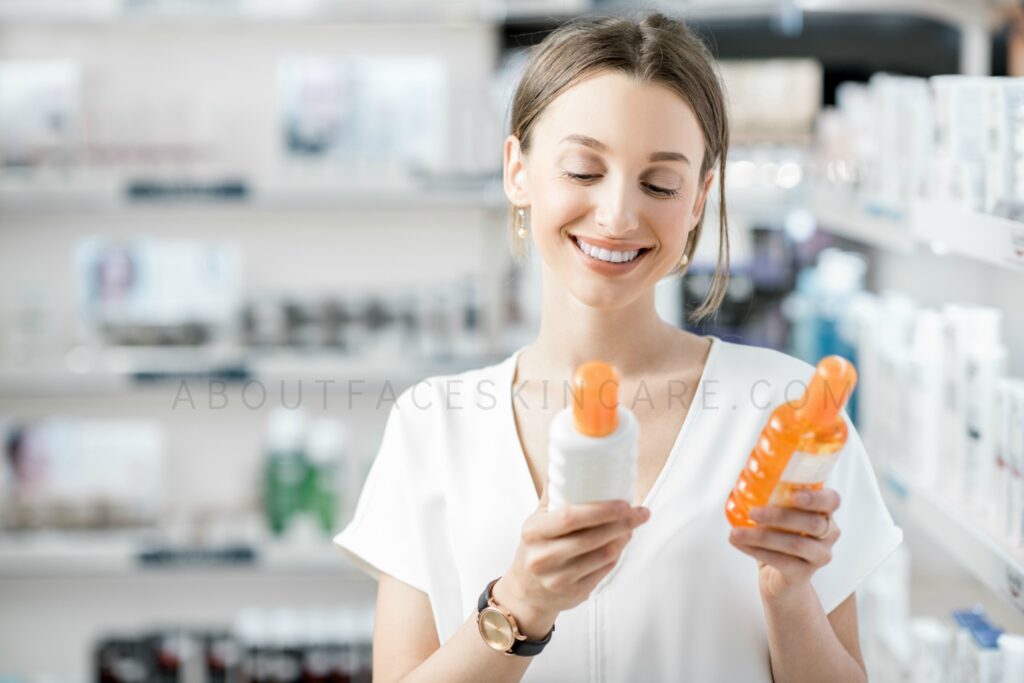
Remember when buying sunscreen was easy? You just picked your SPF-level, and decided which packaging appealed the most to you.
As the years passed and everything regarding sun-protection got more complicated, choosing the right sunscreen can now seem overwhelming.
The beauty-experts at Allure magazine thoughtfully came to help.
Below you’ll find explanations of the most common words and phrases found on sunscreens so you can approach the shelves (or the websites) with the confidence that you’re getting what you want and need, whether that’s a formula that won’t irritate your skin, one that won’t harm the environment, one that won’t budge when you sweat, or all of the above — and then some.
broad-spectrum
adj. brd-spek-trm
A broad-spectrum sunscreen is one that offers protection from both UVB rays, which burn skin, and UVA rays, which cause damage like collagen breakdown. For the best sun protection, use only sunscreens labeled “broad-spectrum.”
chemical
adj. ke-mi-kl
A “chemical” sunscreen is one that protects your skin from UV rays by absorbing them with chemical ingredients, such as octocrylene or avobenzone (though it’s worth noting even “mineral” sunscreens are made in labs).
clinically tested
adj. kli-ni-kl te-std
Some brands test for distinctions like being “good for sensitive skin”, but seeing this term doesn’t indicate which benefit they tested for, nor on how many people — so don’t let it sway your choice.
gluten-free
adj. glü-tn-fr
The Gluten Intolerance Group will place its GFCO seal on beauty products with 10 parts per million or less of gluten. (For people with gluten-allergies, even having the substance on their skin can cause an unwanted reaction.)
hypoallergenic
adj. h-p-a-lr-je-nik
The FDA doesn’t regulate this term (see “Caveat Emptor,” below, for more on that), and companies can claim to be “hypoallergenic” whether or not they’ve formulated a product with a low likelihood of triggering allergic reactions. If you have sensitive skin, or tend to react to sunscreens, look for a fragrance-free mineral formula.
mineral
adj. min-rl
These sunscreens achieve their SPF factor with physical blockers, like Titanium Dioxide and Zinc Oxide. They literally form a physical-barrier between UV rays and skin.
noncomedogenic
adj. nän-käm-d–jen-ik
There’s no standard way to validate whether a beauty product is likely to cause comedones (pimples). But if you’re acne-prone, choose sunscreens with drying salicylic acid and zinc oxide, and avoid ones rich in lipids, like coconut oil and cocoa butter.
oil-free
adj. i(-)l-fr
This means a product doesn’t contain oil, but it doesn’t indicate whether it has other occlusives, like silicone, that can cause breakouts and even heat rash. If you’re concerned, look for a sunscreen that does NOT have either oils nor silicones. (You can find silicone by looking for names that end in “-siloxane” or “-thicone”.)
organic
adj. r-ga-nik
While this can mean that a sunscreen’s botanical ingredients were farmed organically (look for the USDA seal), no sunscreen can be 100-percent organic. Chemical sunscreens rely on lab-concocted compounds to protect from UV rays, and physical ingredients “are synthetically created — it is illegal to use mined versions of zinc and titanium dioxide since they are contaminated with dangerous levels of heavy metals”.
reef-friendly, reef-safe
adj. rf-fren(d)-l, rf-sf
Either term should mean that a sunscreen doesn’t contain any of these five ingredients: oxybenzone, octinoxate, octocrylene, 4-methylbenzylidene, and butyl-paraben. Small studies suggest that these ingredients can affect coral’s ability to reproduce by harming or killing coral larvae and even reduce its life span and immunity. Still, these are unregulated terms, so double-check the label for any of the above ingredients if reef safety is a priority. (Reef-safe sunscreens may also be labeled “biodegradable,” says Sonya Lunder, senior toxics adviser for the Sierra Club’s gender, equity, and environment program.)
sand-resistant
adj. sand-ri-zi-stnt
It means that when the sunscreen was exposed to several different sands — fine, medium, and all-purpose — the SPF level didn’t change. This is usually due to smoother, silkier textures that don’t allow sand to “cling”. (There’s no standard for just how sand-repellent a sunscreen is, but some independent labs offer tests for sunscreen makers who want to make this claim.)
sensitive
adj. sen-s-tiv
You’re better off looking at the back of the label than the front to determine whether or not a sunscreen is good for sensitive skin. Opt for physical sunscreens instead of chemical ones, since they’re less likely to irritate skin, and look for options without “fragrance,” another top offender, listed on the ingredient label.
spf
n. s-p-f
Stands for sun protection factor, specifically for UVB rays. The number next to it is a measure of how much solar energy is required to produce a sunburn on protected skin — as the SPF value increases, so does sunburn protection. (It’s not a measure of UVA protection — another reason to choose broad-spectrum sunscreens.) The FDA’s standard for testing is to apply two milligrams of sunscreen per square centimeter of skin. Or, in medical terms: “A really thick layer.” “So the higher that number, the better.” Reapply every two hours to stay protected.
sport
adj. sprt
Since there’s no actual test to verify that a sunscreen is better for activities, any sunscreen that’s qualified as water-resistant for 80 minutes will do the trick.
water-resistant
adj. w-tr-ri-zi-stnt
In the U.S., the FDA regulates this term via one standard test: A subject alternates between getting wet and drying off multiple times and is then tested to be sure the sunscreen is still on and in effect. All sunscreens that use the term “water-resistant” are required to undergo the test, so look for the stamp if you know you’re going to be swimming or sweating. The Australian government’s Therapeutic Goods Association requires that sunscreens remain fully present on skin after four hours of water exposure. You can seek out sunscreens, like ones from TropicSport, that are sold in both countries and have passed both tests.